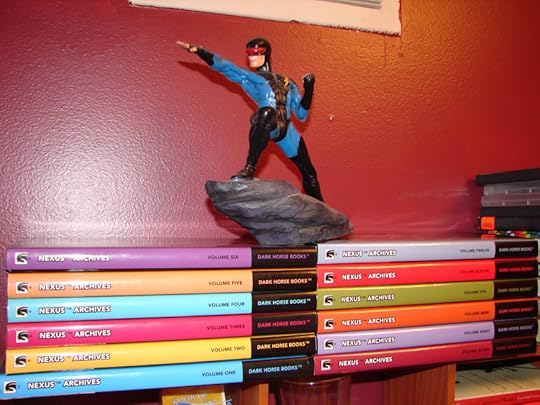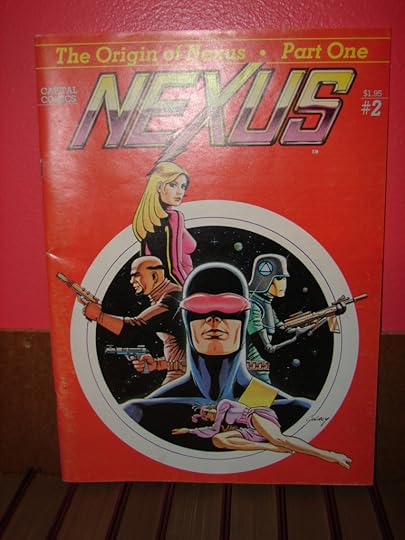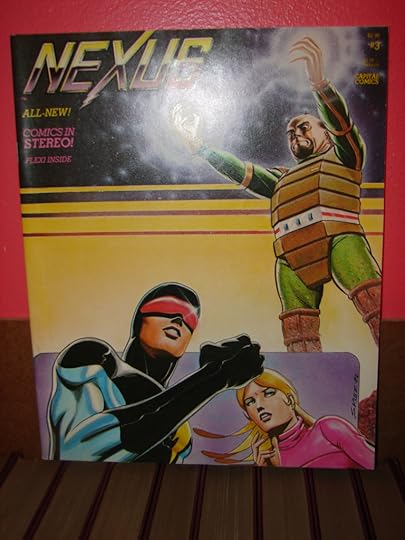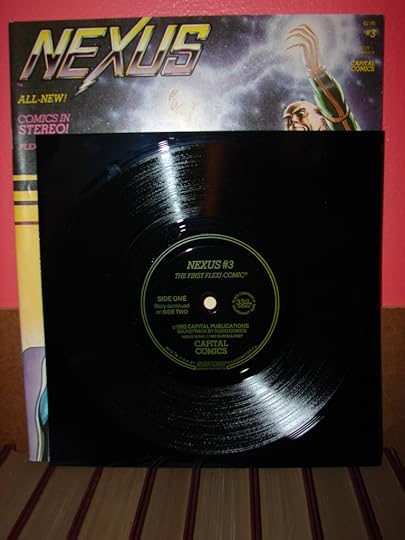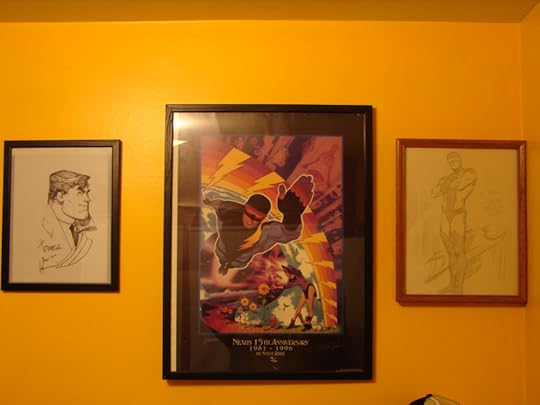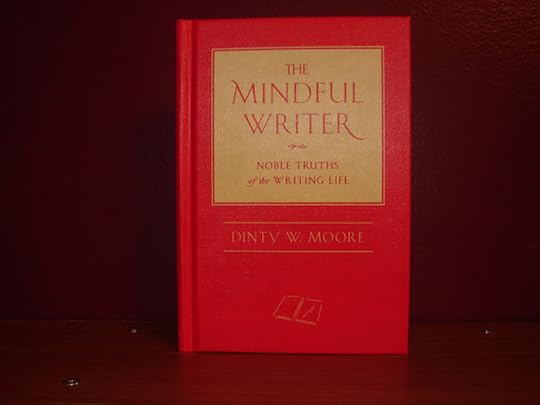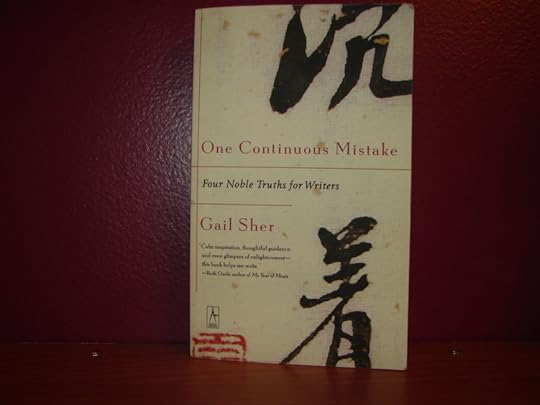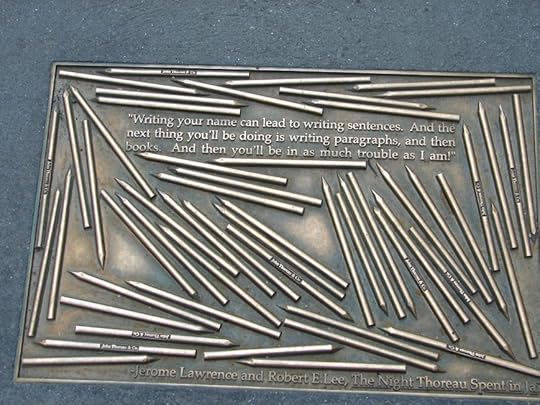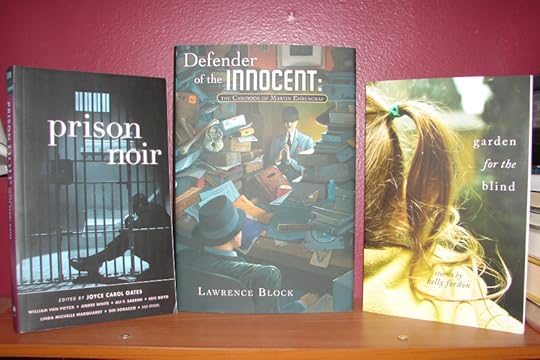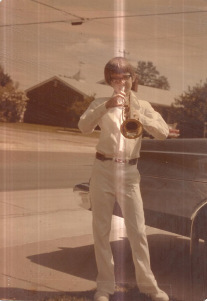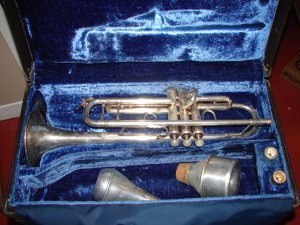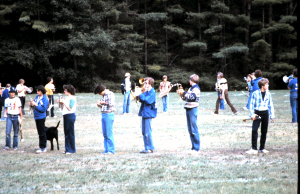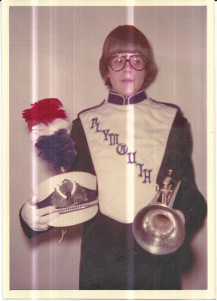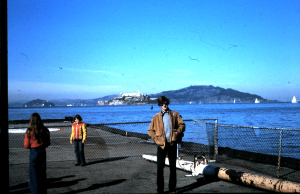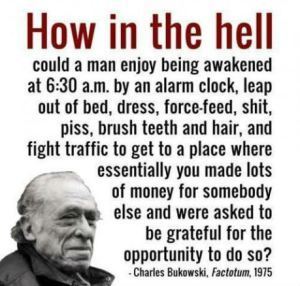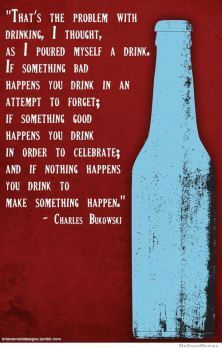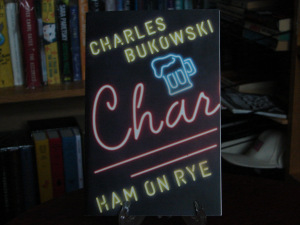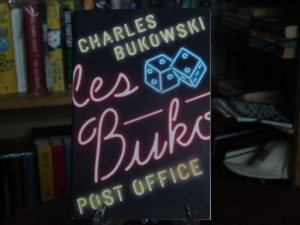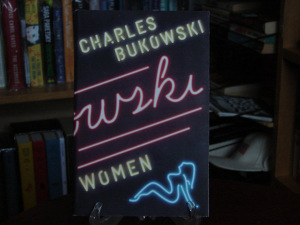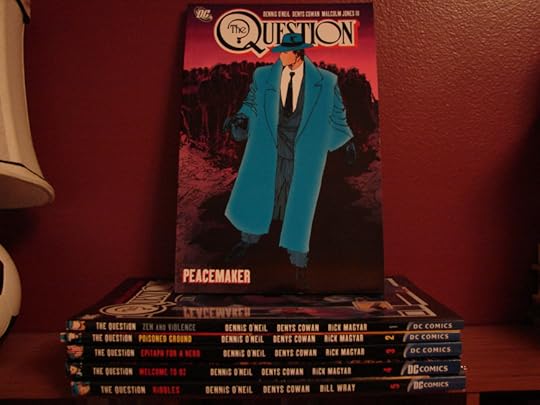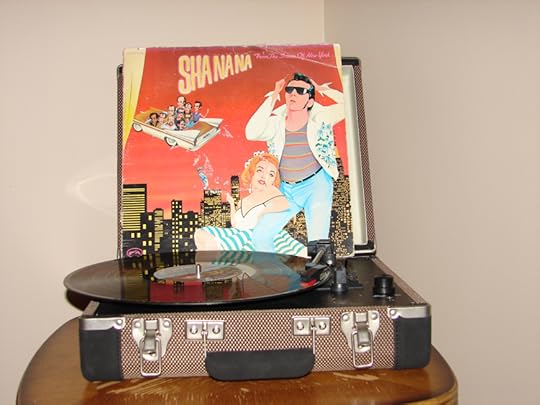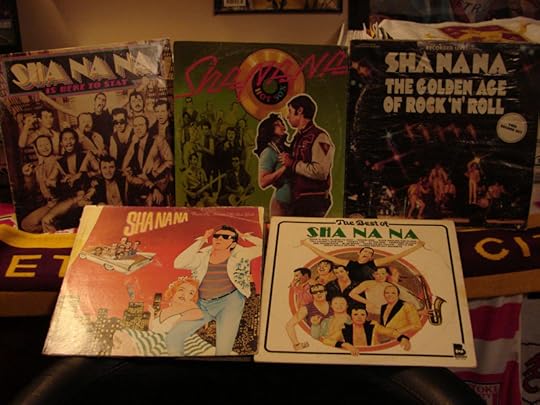Michael Kitchen's Blog, page 23
July 5, 2015
2012 Season Summary
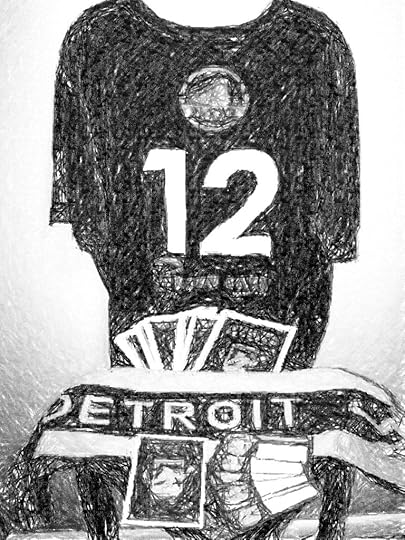 I don’t recall how I heard about Detroit City FC, most likely through Facebook. My initial thought was “a soccer team in Detroit? Sounds like fun.” And so, Denise and I went.
I don’t recall how I heard about Detroit City FC, most likely through Facebook. My initial thought was “a soccer team in Detroit? Sounds like fun.” And so, Denise and I went.
My first impression was about the professionalism of the atmosphere. The merchandise was not cheaply done, and the team colors – rouge and gold – was a good mix for the urban Detroit landscape. I had not heard of the National Premier Soccer League, but the general feeling after my first game was one of an organization that was both serious and fun. I went in wearing a Columbus Crew jersey, and came home with a “Le Rouge” t-shirt and scarf. 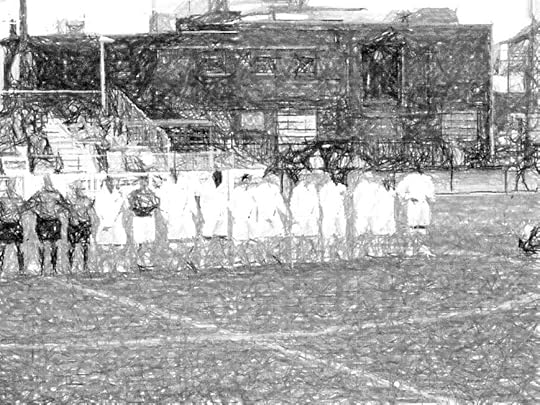 The program listed the rosters, and the names on both teams were all unknown to me. But as the season progressed, the regulars became familiar (Adam Bedell, Keith Lough, Stefan St. Louis, Spencer Thompson, Josh Rogers, Nick Lewin, Cyrus Saydee, Jeremy Clark, Kyle Bethel, Zach Schewee, David Dwaihy, Zeke Harris, and Latif Alashe, to name a few), and a familiar name joined the team. Having followed the Columbus Crew for a number of years, I was surprised to see Knox Cameron on the pitch in a Le Rouge kit. The game had a good pace to it, and Cass Tech Stadium provided a cozy atmosphere near the skyline of Downtown Detroit.
The program listed the rosters, and the names on both teams were all unknown to me. But as the season progressed, the regulars became familiar (Adam Bedell, Keith Lough, Stefan St. Louis, Spencer Thompson, Josh Rogers, Nick Lewin, Cyrus Saydee, Jeremy Clark, Kyle Bethel, Zach Schewee, David Dwaihy, Zeke Harris, and Latif Alashe, to name a few), and a familiar name joined the team. Having followed the Columbus Crew for a number of years, I was surprised to see Knox Cameron on the pitch in a Le Rouge kit. The game had a good pace to it, and Cass Tech Stadium provided a cozy atmosphere near the skyline of Downtown Detroit. 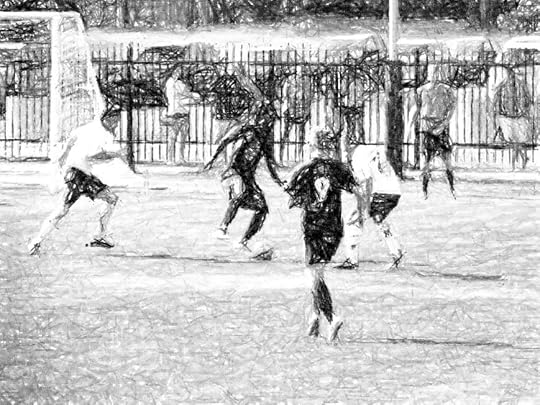 Most memorable, though, were the fans. Not fans…Supporters. The Northern Guard Supporters. For this first season, we stayed on the “family friendly” side. I had not heard of the Northern Guard Supporters. The first match when they appeared in the visiting team bleachers, chanting, singing, and taunting Le Rouge opponents with some salty language, I found them be as entertaining as the team. A bit edgy, perhaps. That is, until the last match of the season – a friendly against the Windsor Stars – where I ventured into the full supporter experience for the first time.
Most memorable, though, were the fans. Not fans…Supporters. The Northern Guard Supporters. For this first season, we stayed on the “family friendly” side. I had not heard of the Northern Guard Supporters. The first match when they appeared in the visiting team bleachers, chanting, singing, and taunting Le Rouge opponents with some salty language, I found them be as entertaining as the team. A bit edgy, perhaps. That is, until the last match of the season – a friendly against the Windsor Stars – where I ventured into the full supporter experience for the first time. 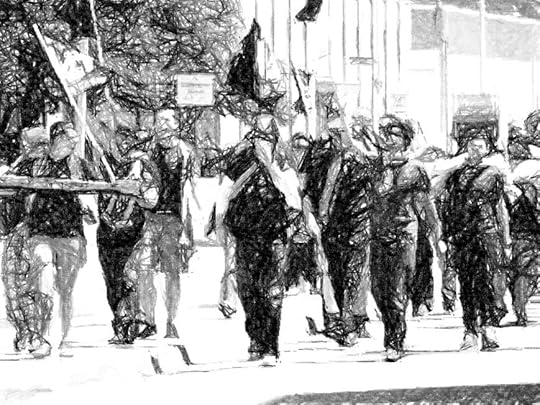
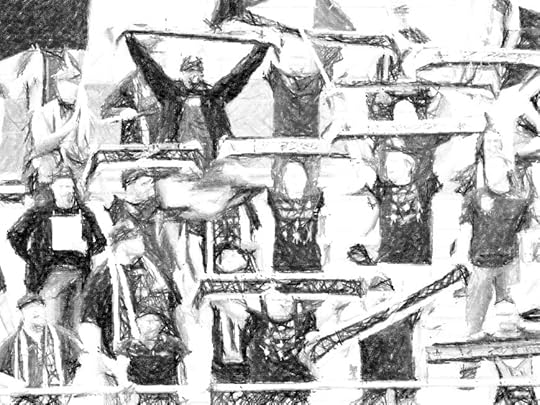
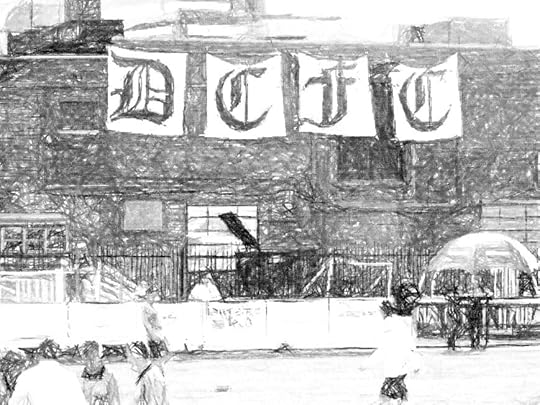 Detroit City FC hooked me. The Northern Guard Supporters reeled me in.
Detroit City FC hooked me. The Northern Guard Supporters reeled me in.
Since that first game, I have had the luck and blessing to have attended every home match to date (this with two more regular season matches to play in 2015). I’ve posted albums on my Facebook page for each game, and I’ve decided to bring the party here with some added photos and video that may not be on Facebook. This isn’t meant as a serious historical perspective of the team that we all know and love. The statistics I’ve culled are from the notes on my game programs with some assistance of the very informative blog about the team – Boys in Rouge. If I have something wrong, please correct me. My commentary will be brief in most cases. This is about what I’ve seen and experienced and wish to provide the story of the game through photos and video, sharing my fun with my fellow Northern Guard Supporters and the players, coaches, fans, family members, and all others involved with, curious about, or in love with this Detroit soccer team. It has been fun looking back through these, seeing many Northern Guard Supporters that I did not know at the time. Please feel free to add your memories about these matches in the comments.
To sing my favorite chant to date:
And when I go.
And when I go.
And when I go make sure I’m wearing rouge and gold.
And when I go.
And when I go.
And when I go make sure I’m wearing rouge and gold.
Bury me in City rouge
Ohhh-ohhh
Bury me in City gold
Ahhh-ahhh

Home from my first DCFC match.
The 2012 matches are as follows:
May 12, 2012: AFC Cleveland.
May 26, 2012: Erie Admirals.
June 2, 2012: Greater Binghamton FC.
June 16, 2012: FC Buffalo
June 23, 2012: AFC Cleveland
July 1, 2012: Erie Admirals
July 11, 2012: Columbus Crew U-20’s (friendly).
July 18, 2012: Windsor Stars (friendly).
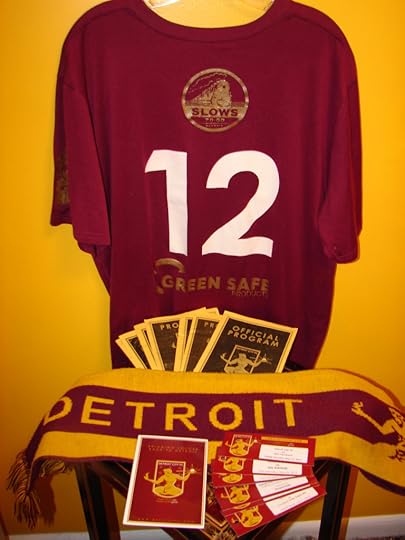


July 3, 2015
(Comic) Book Review: Nexus
I do not pretend to judge. My visits have nothing to do with vengeance. What I do, I do because I must! I act in self defense. – Nexus
It was The Batman that drew me into the world of comic books as a kid. It was a comic book like Nexus that kept me interested in comic books as an adult.
Capital Comics was one of the emerging independent comic book publishers that had started to gain shelf space in the indie comic book stores in the late 1970’s/early 1980’s. The first title the Madison, Wisconsin publisher released was Nexus in 1981. It was an odd, magazine-sized mag, 36 pages printed in black & white, by an unknown writer and artist, from an unknown company. By all standards of the day, it was certain to perish. However, the intriguing story and the depth of the character, along with the stunning artwork developed a following and the attention of the critics.
Horatio Hellpop (Nexus) resides on the moon Ylum (pronounce eye-lum), in which he welcomes refugees from around the universe. To them, he is known as The Liberator, and to others he is deemed an enigma to be feared because he seeks out mass murderers and kills them.
Other people call him a vigilante, and I suppose in the eyes of many of the people observing he could be called a vigilante, but he is really, literally, acting in self-defense…he really doesn’t want to go out and kill these guys. He has no choice. If he doesn’t do it, the dreams get worse and worse, they become physical, he starts to get pain from the victims of the murderers he dreams about. The pain becomes more intense and eventually they’ll kill him. – Mike Baron, (Amazing Heroes #18, December, 1982).
Nexus’ origin begins in the second issue. Horatio’s father, General Theodore Hellpop, was the hero of the liberation of the planet Vradic. The Supreme Soviet promoted him the position of the planet’s Viceroy. He meets and marries Marlis, who then becomes pregnant. The Hellpops approach Brother Lathe, an Elvonic priest and Marlis’ brother, to bless the child before he is born. Lathe, not a fan of his brother-in-law, proclaims that the child is cursed and his life will be a nightmare. This led Hellpop to issue a warrant for Brother Lathe’s arrest. Lathe goes underground, generates a rebellion against the Sov Viceroy, which overpowers the Vradic People’s Militia. The Hellpops are forced to evacuate. Hellpop’s orders were to defeat the rebels at all costs, which he does by destroying the planet. “In order to save Vradic, I had to destroy it.” They flee the galaxy, heading out as far away as possible, landing on the moon of Ylum.
The third and final issue of the magazine format concludes the origin story. The Hellpops give birth to Horatio. The family lives on Ylum alone, and the young Horatio discovers his playmates, Alph and Beta, two Ylumites who suggest to Horatio that he never mention them to his parents. His parents didn’t believe him anyway, writing them off as imaginary friends of the child. When Horatio was five, Marlis wandered into one of the corridors. Alph and Beta disappeared, too. Horatio and his father searched for weeks but could not find her. Months later, her body was found, having starved to death.
Alph and Beta re-appeared and engaged with him as he grew up. He then experienced the beginning of his curse. One night, he had a dream about Vradic and suffered physically from it. He crawled out of bed and found his way into “the tank” – an hourglass-shaped tank that kept him healthy when he was born prematurely – where he recovered. Alph and Beta get under his skin, and, out of anger, he discovers his fusion-casting power, blasting Alph and Beta. The dreams of Vradic continued, intensifying Horatio’s pain and agony. Alph and Beta appear, giving him the answer of how to make the dreams stop: “You must eliminate the cause.” And Horatio does so.
The third issue also included a flexi-disc that you could play on your stereo and have the book read to you. Here’s the opening…
Nexus’ supporting cast are equally complex and diverse. Sundra, his love interest, was an agent for the Web, sent to Ylum to report back to the agency. His vigilante/counterpart Juddah Maccabee – The Hammer – is a more robust, active warrior from Thune. Dave, Nexus’ closest friend, is an intelligent Thune, the father of Juddah, and a person he can bounce philosophical thoughts off. The futuristic setting is also ripe with the political struggles of a planet (or moon) inundated with refugees seeking to establish a functioning government; energy politics of the more powerful planets, and genocide throughout the galaxy. Even the fusion-casting hero’s effect on black holes becomes an issue.
The third issue was the final issue as a magazine. Capital shifted the format into a regular, 32-page, color comic book. They published six issues before going under, but First Comics picked up the title, and continued for a total of 80 issues. Dark Horse Comics published a number of mini-series, adding 22 more issues to the Nexus legend.
The twelve volumes of Nexus Archives by Dark Horse Comics collects the three black and white issues, the eighty Capital/First Comics issues, and the four issue mini-series, Next Nexus.
Mike Baron was one of my favorite comic book writers as a result of Nexus. Capital Comics published his second title, The Badger, a martial artist with multiple-personality disorder.
Steve Rude’s art is just beautiful. The first piece of original art I ever owned was a Steve Rude pencil sketch of Nexus, which he did for me at the 1985 Chicago Comicon, still framed and hanging in my office. When I considered a cover for my novel I strongly considered Mr. Rude and sent him an email to inquire about the possibility. Unfortunately his schedule was booked.
Thirty-five years after the appearance of Nexus, Baron and Rude are reuniting and bringing out a Nexus comic strip. Definitely something for the Nexus fan to return to, and for new fans to come on board.
Click this link to view the Kickstarter video:https://www.kickstarter.com/projects/steverude/rude-dude-nexus-and-the-moth-comic-strip-newspaper/widget/video.html
Click HERE to go to the Kickstarter page.


June 28, 2015
Vinyl Memories #8: Rocky
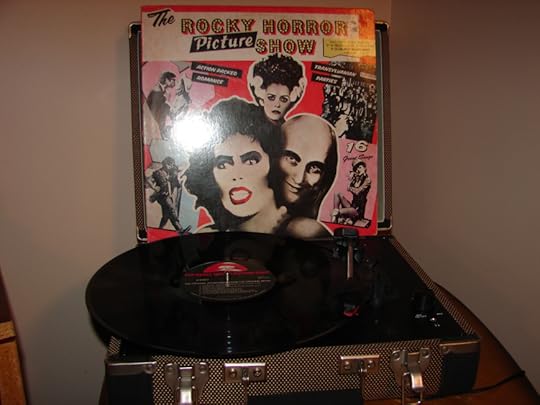
In the previous Vinyl Memories, I wrote about the music I brought to my college roommates. I became exposed to new music, as well. One of those slices of vinyl was The Rocky Horror Picture Show.
I was familiar with tunes “The Time Warp” and “Sweet Transvestite,” through the Dr. Demento Radio Show I listened to on Sunday nights back in high school. But I had no clue where these tunes came from.
On a Saturday night, my Romulus suite-mates, Dan and Rob, brought in their friends, Ralph, Stu, and Joe, as they were going to the Briarwood Theater in Ann Arbor for a midnight showing of Rocky Horror Picture Show. It was, I discovered, a regular event for them. I could relate in that I had seen Star Wars three or four times. But they went to this movie almost every week, which completely baffled me.
Based on the Richard O’Brien play which opened June, 1973, in London, the movie premiered at the UA Westwood Theater in Los Angeles, CA on September 26, 1975, and was released in the United States on September 29, 1975. It had a very brief run in limited markets, and was considered a failure. Then, on April Fool’s Day in 1976, the Waverly Theater in New York – popular for its midnight showings of cult classics – ran the film, where it became the birthplace of the audience participation with the film.
I was a “virgin,” they declared, having never seen it, and they were eager to change my status. I might have gone, however there was something that I wasn’t comfortable with. These guys dressed up as the characters in the movie. Rob went as Rocky, Ralph was Eddie, Stu was Riff Raff, and Joe was Dr. Frank N Furter. A couple of girls that Stu and Joe were dating at the time took on the roles of Magenta and Columbia. Having come from a sheltered, conservative Plymouth upbringing, I was hesitant about joining them on their midnight adventure. After seeing Joe emerge from our bathroom dressed as Dr. Frank N Furter, well, I passed.
Cosplay was not common back then. Outside of Trekkies (Star Trek fans), the Rocky Horror phenomenon must have been near the roots of the history of Cosplay.
I finally saw the movie on cable years later. Perhaps on the small screen it lost its grandeur, because I was unimpressed. The music was good and fun. Discovering that Meat Loaf was in it (subject of a future Vinyl Memory), increased my interest. But yeah, I just didn’t get the reason for the hype.
Yet, I feel I’ve missed something. A lot of good people I know have recommended it. It sounds like it’s about the movie AND the experience with those in the audience. I can relate to that thanks to the Detroit City FC/Northern Guard Supporters experience (And nothing…will ever be the same). A few years ago I purchased tickets for the live musical performed at the Baldwin Theater in Royal Oak. However, my wife’s uncle passed and the viewing was the night of the show.
This year is the 40th Anniversary of the cult classic. New York will be hosting a 40th Anniversary convention from September 25-27, and will premiere a film, “Rocky Horror Saved My Life.”. I don’t need to go to that extreme for my virgin viewing of the full experience. But maybe, somewhere around here, I’ll be able to partake in that late night, double feature, picture show; in every day casual wear. Can’t really see myself in fishnet and garters or a gold Speedo. I don’t think you want to, either.
SIDE A
1. Science Fiction/Double Feature
2. Dammit Janet
3. Over at the Frankenstein’s Place
4. The Time Warp
5. Sweet Transvestite
6. I Can Make You A Man
7. Hot Patootie-Bless My Soul
8. I Can Make You A Man Reprise
SIDE B
1. Touch-A, Touch-A, Touch Me
2. Eddie
3. Rose Tint My World
A) Floor Show
B) Fanfare/Don’t Dream It
C) Wild And Untamed Thing
4. I’m Going Home
5. Super Heroes
6. Science Fiction/Double Feature: Reprise
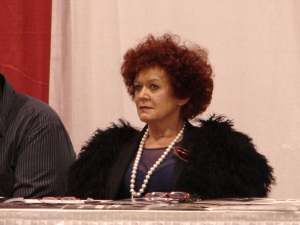
Patricia Quinn (Magenta) at the 2012 Motor City Comic Con


May 29, 2015
One million words
Remember these high school assignments: Write a 500-word essay on _____.
The struggle. The agony. Five hundred words? How many pages is that? You’d write something, then count the words. Only three hundred and ten? How am I going to add another one hundred and ninety words to that? (Yes, I know. Today’s word processors have the ability to tell you the word count. For me, this was back in the day where the electric typewriter was high-tech!)
In high school, being a writer was not on my radar. But then college happened, and well, getting these kinds of assignments became challenging in a different way.
Write a short story under 2,500 words.
The rough draft would come out to be almost twice that. How am I suppose to cut all this? The same would happen in law school and as a law clerk, only with page-count restrictions.
Briefs cannot exceed 25 pages.
When the factual details in the case were intricate, and faced with conflicting legal theories, I wondered how I was going to tighten up the brief in order to make the strong argument within twenty-five pages. Shrinking the font to an unreadable size was not an option.
On August 1, 2012, I finished reading Dinty Moore’s little book, The Mindful Writer – Noble Truths of the Writing Life (Wisdom Publications, 2012). It is something that was written in the Afterword that clings to me today.
It is said that the writer Andre Dubus would end his writing session each day by marking down his word count. How many words had he managed in those four hours? After the number, whatever it was, he always wrote the words “thank you.”
So, on August 1, 2012, I took a small spiral notebook, and began tracking. Fifteen-hundred and twenty-two words were written that day (no “thank you’s” written due to space, but thank-yous were said).
After finishing my writing work today, Thursday, May 28, 2015, adding 2,621 words to the tally, I have hit one million words (1,000,109 to be precise).
Two years, nine months, and twenty-eight days of writing can get you 1,000,000 words.
The thing that surprises me the most is that in order to get to that million words, I averaged writing 970 words per day over the 1,031 days. Journal entries, writing exercises, blogs, first drafts of short stories and novels, and their revisions, all of it has added up.
The question is, did those one-million words amount to anything?
The final revisions of The Y in Life.
Two short stories published in Legends: A Literary Journal from Grey Wolfe Publishing Summer, 2013.
A finalist in the 2013 Michigan Bar Journal Short Story Contest.
Two short stories and an essay published in Legends: A Literary Journal from Grey Wolfe Publishing Autumn 2013.
A 50,000 word rough draft novel completed during NaNoWriMo, 2013.
The first draft and first revision of the novel I am currently working on (not the NaNoWriMo 2013 novel), at 91,540 words.
Four unpublished short stories with one currently entered in the 2015 Michigan Bar Journal Short Story Contest, and two others circulating amongst publishers.
2,377 pages of journaling.
Everything written on this website, excluding this entry.
Not bad.
Being a writer requires one to write. It is evident that I do write. However, I still get stuck in Moore’s Four Noble Truths for Writers:
The writing life is difficult, full of disappointment and dissatisfaction.
Much of this dissatisfaction comes from the ego, from our insistence on controlling both the process of writing and how the world reacts to what we have written.
There is a way to lessen the disappointment and dissatisfaction and to live a more fruitful writing life.
The way to accomplish this is to make both the practice of writing and the work itself less about ourselves. To thrive, we must be mindful of our motives and our attachment to desired outcomes.
Too often, I focus on writing to be published, because my ego wants that. As an actor wants to see his or her name in lights on Broadway, I want to see my novels in bookstores, my stories in The New Yorker and The Paris Review. This twists me into the self-defeating spiral of questioning whether I’m a writer.
A million words, Mike. C’mon. You’re a writer.
I start to argue with myself, that I’m not a published writer, but, there’s a whole page on this website that puts an end to that debate.
I read The Mindful Writer back in 2012, but it really didn’t sink in until I came across another Four Noble Truths for writers. I found Gail Sher’s One Continuous Mistake: Four Noble Truths for Writers (Penguin Compass, 1999) just before we left for New York City last summer. I read it while traveling to and from New York City on the train from our Trenton, NJ hotel. Her Four Noble Truths provided the key to unlock Moore’s Fourth Noble Truth for me.
Writers write.
Writing is a process.
You don’t know what your writing will be until the end of the process.
If writing is your practice, the only way to fail is to not write.
The combination of Sher’s book and visiting New York City for the first time, brought it home for me. Her short pithy chapters read while in a city where a day’s walking and subway travel can get you to more book stores than are located in Macomb County, had its effect. The 732 days before the NYC trip, my average words per day was 883. Since NYC, 1,183 words per day. I’ve been getting out of my own way, working on the exercise, journal entry, or project for what it is, losing myself to it.
Writer, Nick Hornby felt that his formative years as a writer was hindered by the prescriptive advice that experienced writers gave him. His advice is the following:
Walk into a bookshop and you will see work by writers who produce a book every three months, writers who don’t own a TV, writers with five children, writers who produce a book every twenty-five years, writers who never write sober, writers who have at least one eye on the film rights, writers who never think about money, writers who, in your opinion, can’t write at all. It doesn’t matter: they got the work done, and there they are, up on the shelves. They might not stay there forever; readers, now and way off into the future, make that decision. (Ten Years in the Tub: A Decade Soaking in Great Books ( McSweeney’s, Believer Books. 2013)
A million words? The work is getting done.


May 25, 2015
Vinyl memories # 7 Maynard Ferguson
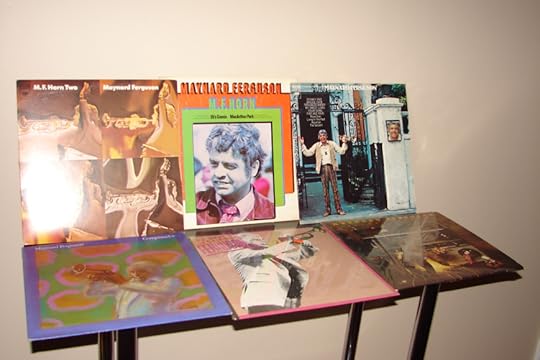 1980. High school now behind me, it was on to college. Though I had played the trumpet the previous seven years, as I wrote in Vinyl Memories #6, the instrument was behind me. But the music, not completely. Maynard Ferguson albums joined me on the journey to Eastern Michigan University.
1980. High school now behind me, it was on to college. Though I had played the trumpet the previous seven years, as I wrote in Vinyl Memories #6, the instrument was behind me. But the music, not completely. Maynard Ferguson albums joined me on the journey to Eastern Michigan University.
The popular trumpet players of the time were Herb Alpert, Doc Severson, and Chuck Mangione. I have no recollection on how I was introduced to Maynard Ferguson, but I preferred him and his band over the others. I think it might have begun with the album M.F. Horn, because it featured “Eli’s Coming” and “MacArthur Park,” two numbers I had played at some point in band. Hints of India’s influence slipped into his arrangements, and in some cases were more pronounced, such as “Chala Nata” (M.F. Horn) composed by Vemu Mukunda who played the veena on the piece. The albums which followed tended to have arrangements of more popular tunes, such as “Bridge Over Troubled Waters” (Maynard Ferguson), the theme from “Shaft” (M.F. Horn Two), “Spinning Wheel” (M.F. Horn Two), and “Gonna Fly Now,” the theme from “Rocky (Conquistador). Here’s a sample of an appearance on the Mike Douglas Show.
Maynard Ferguson was born in Verdun, Quebec, and attended high school in Montreal. A member of Boyd Rayburn’s band in the late 1940’s, he moved on to Stan Kenton’s band from 1950-52 before becoming the leader of the Birdland Dream Band at the popular New York City jazz club for ten years. He moved on to play in Las Vegas and Hollywood before spending a couple years in the valley of Rishi in South India. In October, 1967, he formed his own band in Manchester, England.
In the fall of 1980, I moved into my dorm room on the campus of Eastern Michigan University. My room and suite mates were a random draw, as I knew no one else who was attending the school. Obviously, there was some concern on how receptive these guys would be to Maynard Ferguson on the stereo. My roommate was a kid from Akron, Ohio who wasn’t even attending EMU. He was enrolled at Washtenaw Community College to bring his grades up so he could then make it into EMU and play on the football team. To the turntable he brought a group called The Michael Stanley Band, which did about as much for me as Maynard Ferguson did for him.
My suitemates, however, were much cooler. Students from near the top of the class of Romulus High School. They played Dungeons & Dragons, using miniatures, (something that the guys I played the controversial role playing game with in Plymouth didn’t use, which maybe we should have to avoid controversies such as a giant’s ability to throw a boulder around corners). They read comic books. But they weren’t “nerds” from where they came from. Rob had played football at Romulus High, and Dan was smooth and charismatic, especially with the ladies. By the second term, Rob had left campus for the army, and I moved in with Dan. Yes, my Maynard Ferguson albums were mocked, however I remember returning to the dorm after a weekend visit home, to freshly painted walls which included his favorite band’s logo and “Maynard Ferguson,” prominently displayed.
Maynard Ferguson made the twenty mile trip with me from Plymouth to Ypsilanti as a tie to the past, a little bit of familiarity in my new environment. And as it is with a new journey, discoveries are made. Some were left behind (like The Michael Stanley Band), but others become a part of the soundtrack of my life.
ALBUMS:
M.F. Horn
Side One
Eli’s Coming
Ballad to Max
MacArthur Park
Side Two
Chala Nata
If I Thought You’d Ever Change Your Mind
L-Dopa
Maynard Ferguson
Side One
Movie Over
Fire and Rain
Aquarius
The Serpent
Side Two
My Sweet Lord
Bridge Over Troubled Water
Your Song
Stoney End
Living in the Past
M.F. Horn Two
Side One
Give it One
Country Road
Theme from “Shaft.”
Theme from “Summer of ’42”
Side Two
Mother
Spinning Wheel
Free Wheeler
Hey Jude
Primal Scream
Side One
Primal Scream
The Cheshire Cat Walk
Side Two
Invitation
Pagliacci
Swamp
Conquistador
Side One
Gonna Fly Now (Theme from “Rocky”)
Mister Mellow
Theme from “Star Trek”
Side Two
Conquistador
Soar Like an Eagle
The Fly
The Best of Maynard Ferguson
Side One
Gonna Fly Now (Theme from “Rocky”)
MacArthur Park
Theme from “Star Trek”
Birdland
Give it One
Side Two
Stella by Starlight
Theme from “Battlestar Galactica”
Pagliacci
Main Title from “Star Wars.”


May 4, 2015
Book review: Short Stories #1
At the age of twenty-three, Edward J. O’Brien launched The Best American Short Stories in 1915, a collection of the best short stories published in the previous year.�� Upon his death, killed in the bombing of London on February 24, 1941, Martha Foley was put in charge of the annual short story anthology, and did so for thirty-seven years.�� Foley, in her first volume, defined a successful short story: “A good short story is a story which is not too long and which gives the reader the feeling he has undergone a memorable experience.” (The Best American Short Stories of the Century, Houghton Mifflin Company, 1999).
Others, during the years, have chimed in with their definition of a good short story.�� For Raymond Carver, “Abjure carelessness in writing, just as you would in life.”�� John Gardner wrote, “I want stories in which the author shows frank concern, not self-protective ‘sensible’ detachment.”�� For Louise Erdrich, “The best short stories contain novels.�� Either they are densely plotted, with each line an insight, or they distill emotions that could easily have spread on for pages, chapters.” (The Best American Short Stories of the Century, Houghton Mifflin Company, 1999).
My fiction reading fluctuates between novels and short story anthologies.�� Different things draw me to the short story anthology.�� Sometimes its the author, and other times its the theme.�� Due to the recent publication of a short story collection written by a mentor of mine, I thought it was about time to review short story collections.
One form of short story anthology is a collection of short stories by a single author.�� garden for the blind (Wayne State University Press, 2015) is a unique collection of stories by an instructor/mentor of mine, Kelly Fordon.�� She teaches a fiction writing class through Springfed Arts, an organization dedicated to educating and inspiring writers.�� The eleven stories within��garden for the blind have a common thread throughout – two protagonists named Alice and Mike.�� The opening story, the great gatsby party, is set in 1974, The concluding piece, garden for the blind, is set in 2014.�� Within this span of forty years, the reader is presented with episodes of Alice and Mike’s life.�� They had come from privilege, growing up in an affluent suburb of Detroit, and are affected by tragedy and a morally bankrupt decision.�� The reader is privy to how their lives play out.�� It’s like a novel told through a collection of short stories.�� Each story stands on its own, and they are moving and realistic, pulling on the polarizing tensions of race and privilege, creating a collection of plot-driven stories culminating into a character-driven work.
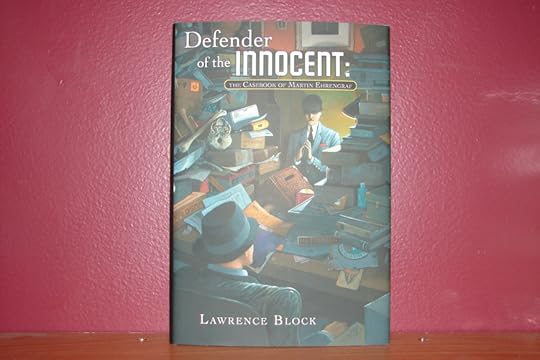 Some short story anthologies are based on a fictional character or world.
Some short story anthologies are based on a fictional character or world.
Going from one mentor to another, Lawrence Block has been my distant mentor for thirty years.�� My editor at the Newspaper Institute of America, a correspondence writing course I took after I graduated college in the mid-1980’s, introduced his work to me because she thought my style was similar to his.�� At the time, he was also the monthly column writer on fiction at Writer’s Digest Magazine.�� A Grandmaster Award Winner, Block’s mystery novels fill two of my book shelves, more if I added the books on writing and the earlier works that I do not own.�� His longevity comes from having developed series characters such as Matt Scudder, the former police officer, alcoholic, private investigator, whose stories are cynical and brooding much like Scudder; Bernie Rhodenbarr, the whimsical burglar whose front is that of a used book store owner, who solves mysteries mostly in order to get himself off the hook; and Keller, the hit man with a heart.�� Last year, one of Block’s Matt Scudder novels,��A Walk Among the Tombstones, was released in film, starring Liam Neeson, which I highly recommend.�� It’s not verbatim to the book because it’s the tenth book in the series, though the general plot is consistent.
Defender of the Innocent: The Casebook of Martin Ehrengraf (Subterranean Press, 2014) is a collection of short stories featuring Block’s character, criminal defense attorney, Martin Ehrengraf.�� Ehrengraf’s clients never have to take their case to trial because it is his presumption that all of his clients are innocent, “which presumption is invariably confirmed in due course, the preconceptions of the client himself notwithstanding.” (The Ehrengraf Presumption).�� His contingency fee is high, but there are significant expenses that Ehrengraf must shoulder in order to see to it that his clients’ charges are dropped.�� Block has not written a novel featuring the crafty, diabolical attorney.�� There are only these twelve short stories, collected in this volume to date.�� The stories are twisted and compelling, and if you’re a lawyer you may be distracted that Ehrengraf takes his criminal cases on a contingency basis – counter to an attorney’s professional responsibility.�� Realize, however, that to Ehrengraf, crossing the line of professional ethics is minor compared to the actions he takes to ensure his clients innocence.
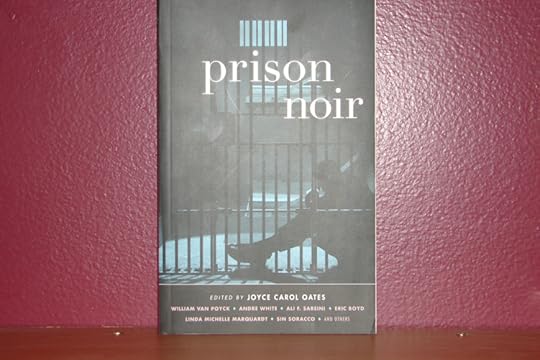 Short stories by multiple authors based on a central theme is another form of anthology.�� Akashic Books has published a massive series of noir anthologies with specific settings.�� I discovered them at Book Beat one afternoon, as the store has a large selection on hand.�� I was originally drawn to Manhattan Noir and Manhattan Noir 2, both edited by Lawrence Block.�� The locations of the noir series are not only set in American cities, such as��Detroit Noir��(edited by E.J. Olsen and John C. Hocking),��San Francisco Noir��(edited by Peter Maravelis), and��Kansas City Noir (edited by Steve Paul), but also global locations which include Delhi Noir (edited by Hirsh Sawhney), Istanbul Noir (edited by Mustafa Ziyalan & Amy Spangler) and Singapore Noir (edited by Cheryl Lu-Lien Tan).
Short stories by multiple authors based on a central theme is another form of anthology.�� Akashic Books has published a massive series of noir anthologies with specific settings.�� I discovered them at Book Beat one afternoon, as the store has a large selection on hand.�� I was originally drawn to Manhattan Noir and Manhattan Noir 2, both edited by Lawrence Block.�� The locations of the noir series are not only set in American cities, such as��Detroit Noir��(edited by E.J. Olsen and John C. Hocking),��San Francisco Noir��(edited by Peter Maravelis), and��Kansas City Noir (edited by Steve Paul), but also global locations which include Delhi Noir (edited by Hirsh Sawhney), Istanbul Noir (edited by Mustafa Ziyalan & Amy Spangler) and Singapore Noir (edited by Cheryl Lu-Lien Tan).
Prison Noir�� (Akashic Books, 2014) edited by Joyce Carol Oates, is a collection of stories set in prisons and jails in America, mostly written by inmates.�� As Joyce Carol Oates wrote in the Introduction, “We may feel revulsion for some of the acts described in these stories, but we are likely to feel a startled, even stunned sympathy for the perpetrators.�� And in several stories, including even murderers’ confessions, we are likely to feel a profound and unsettling identification.”�� For the most part, the stories are populated with characters as complex and real as you’ll find, caught in the society within our society that most people want to or choose to ignore.
Short story anthologies collect stories written by a specific author, or about a specific fictional character or world, or written by several authors with a common theme.�� I see short stories as being like television episodes, where novels are full-length feature films.�� Mixing the two up as a part of my reading regiment I find enjoyable.�� Which means I’ll be writing about more short story anthologies in the future.


April 19, 2015
Vinyl memories #6 – Plymouth Centennial Educational Park Symphony Band, live at the First Western International Band Clinic, 1980
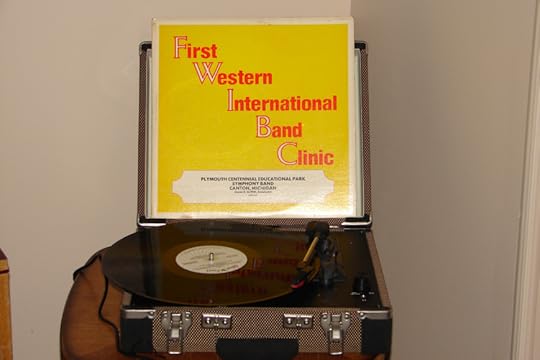 This vinyl memory focuses on my senior year of high school; a couple of hours on a Saturday afternoon in January, 1980, in sunny San Jose, California.
This vinyl memory focuses on my senior year of high school; a couple of hours on a Saturday afternoon in January, 1980, in sunny San Jose, California.
No.�� The needle cuts deeper than that, revolving around a formative period of my life, which began on the threshold of entering the sixth grade at West Middle School, when I was asked which instrument I wanted to play.
Memory is a tricky thing.�� When I think back, I do not recall wanting to play a musical instrument.�� I don’t recall if the question posed to me was “Do you want to be in the band?” or “Which instrument are you going to play because you’re going to be in the band?”
In a previous “vinyl memory” I wrote about my dad and aunt’s musical pursuits during their youth.�� Aunt Shirley’s kids – my cousins – were both older than me, and had taken up musical instruments.�� Robby played the trumpet, and Al the drums.�� I suppose it was natural or expected of me to follow along.
I randomly chose the trumpet.
At West Middle School, the band director was Mr. Driftmeyer. Early on I became motivated to practice not because it was a joy to sit in my room and blurt out notes from an elaborate brass bugle foist upon me, or that I had a desire to become the next Herb Alpert.�� No.�� Fear motivated my practice.�� Fear of being embarrassed and humiliated by Mr. Driftmeyer before everyone else in the room.�� I was that shy, quiet kid that stayed out of the spotlight.�� I practiced out of emotional self-defense.
In the 7th grade, I was a teacher’s aid for Mr. Driftmeyer.�� Myself and two other students were charged with the task of setting up the chairs for the band that was scheduled for the following hour, and to practice.�� The extra practice was noted and Mr. Driftmeyer moved me up into the 8th grade band.�� There was one piece of advice he gave to me which I should have taken at the time.�� He suggested that I change to the baritone, because he felt my embouchure was better suited for the larger brass horn’s mouthpiece.
Yeah, like that was going to happen.�� At the end of sixth grade, my parents shelled out to buy me a Bach Stradivarius – a top-of-the-line trumpet that only two other kids in the school had.�� And they had been paying for weekly private trumpet lessons for me with a University of Michigan trumpet player.�� Switch to the school-provided baritone after all that initial investment?�� Wasn’t going to happen.
So, in 7th grade, instead of having lunch with the kids in my class, I, and a handful of other 7th graders, had 8th grade band.�� Then we had lunch with the 8th graders.�� In 8th grade, I sat among the top three or four trumpets in the band.
High school was a different beast.�� The big leagues of the Plymouth musical programs.�� There were four bands – Symphony, Concert, Varsity, and Cadet.�� Each year, you had to tryout to determine which band you would be placed in.�� Symphony was the top band, and once you placed there, you didn’t have to tryout ever again.�� Concert Band was the second best, Varsity the third, and Cadet the lowest.�� The Cadet Band was so low that it did not participate in the annual “Variety Is…” end-of-year band program which featured the other three and the two extracurricular bands – Jazz and Marching.
Everything seemed to be in my corner.�� I had done well in middle school.�� The person judging the auditions for the trumpets was Mr. Driftmeyer.�� It should have been anxiety-free?�� But for some reason, I choked.�� I was horrible.�� I was so nervous that I lost all composure and cried through the audition.
My freshman year of high school, I was in the Cadet Band.
The two other extracurricular bands in the high school – Jazz Band and Marching Band – also had to be auditioned for.�� I had no interest in being in the Jazz Band.�� It was a smaller, select group of skilled musicians that improvisation came to them as easy as meter and rhyme to the poet.�� It was difficult enough to play the music before me and blend well with the larger group.�� But to give me a spotlight and a moment to let unrehearsed music flow from me?�� Not my scene, man.
Marching Band I did try out for, and was accepted.�� This started with a week at Band Camp just before school began, in Northern Michigan.�� That was hell.�� See, I’m the kind of guy that thinks roughing it is staying a hotel without WiFi.�� And I prefer my privacy.�� Bunks, dorms, woods, communal showers and bathrooms?�� Oh holy hell.
Then, every week during the football season, it would be practice after school to prepare for the show we’d put on for whichever high school’s team had a football game – Plymouth Salem or Plymouth Canton.�� Then it became more challenging when the band went into the Marching Band competitions.�� Plymouth entered the competition realm in either my sophomore or junior year, and they would take place on the weekends at different sites around the state.
The Cadet Band was directed by Mr. Endres.�� James R. Griffith, the legendary Plymouth High School band director, worked mostly with the other bands, most importantly the Symphony Band.�� Mr. Endres’ was responsible for the high school’s orchestra.�� Because I showed during the year that I was a better trumpet player than what was expected of a Cadet Band musician, I was asked by Mr. Endres to join the Symphony Orchestra.�� The orchestra consisted of a string ensemble – violins, violas, cellos, and bass – and a few brass and woodwinds that Mr. Endres was able to recruit.�� I did so, and it was good experience.�� It even opened the door for me to perform in the pit orchestra for the school’s performance of “How To Succeed in Business Without Really Trying.”
Tryouts came at the end of my freshman year, and I vaulted into the Concert Band.
The Plymouth Centennial Educational Park’s Band program was heavily supplied with trumpet players.�� However, there was a scarcity of baritone players.�� Two of us – Mark Zamarka and I – decided to take on the challenge to learn the baritone.�� He was a freshman and was in the marching band as well.�� At the end of the year, we auditioned and earned our spots as the baritone section in the Concert Band.�� We remained trumpet players in the marching band, and after a full year of finally following Mr. Driftmeyer’s advice, I made it into the Symphony Band my senior year with the baritone.
I don’t know what it was about the baritone.�� Maybe because I could hide behind its more massive brass piping and tubing.�� I did find it easier to play.�� There was also a relief from the competition from all the other trumpet players in the school.�� And baritone solos?�� The baritone was not one of the key instruments called upon by composers to feature.
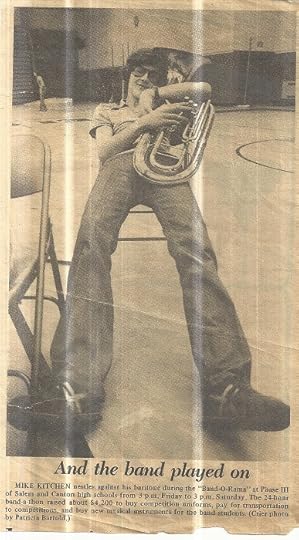 If there was anything more terrifying for me than being embarrassed by Mr. Driftmeyer in middle school, it was to be humiliated by Mr. Griffith.�� Perfection was expected.�� Except for Marching Band, I had yet to have him as my band director.�� It was Mr. Endres in Cadet Band my freshman year; Mr. Brownlee in Concert Band my sophomore year; Mr. Battishill in Concert Band my junior year; and I’d go out my senior year in Mr. Griffith’s Symphony Band.
If there was anything more terrifying for me than being embarrassed by Mr. Driftmeyer in middle school, it was to be humiliated by Mr. Griffith.�� Perfection was expected.�� Except for Marching Band, I had yet to have him as my band director.�� It was Mr. Endres in Cadet Band my freshman year; Mr. Brownlee in Concert Band my sophomore year; Mr. Battishill in Concert Band my junior year; and I’d go out my senior year in Mr. Griffith’s Symphony Band.
Mark returned to the trumpet in Concert Band, so I was partnered with a sophomore girl named Darcy Johnson.�� A dose of additional teen-age anxiety.�� Me, the guy who discovered that girls in Plymouth weren’t allowed to date until they were sixteen-years-old or out of high school (at least that’s what they’d tell me the few times I muscled up the courage to ask), was to be paired up for a full year with the attractive underclassman.�� But wait, there’s more.�� It was my sister, Marie’s, freshman year in high school, and she auditioned and brought her alto saxophone into Symphony Band, too.�� Making the Symphony Band in my senior year set me up for the trifecta of complete and catastrophic humiliation and embarrassment.
Our focus was the clinic.�� The Symphony Band was invited to a three-day band clinic in San Jose, California on January 17-19, 1980.�� There were ten pieces of music that we prepared and labored over leading up to the trip.�� On January 17, 1980, we performed the concert at Ann Arbor’s Hill Auditorium, for parents and to give us a dress-rehearsal and sending off before flying to the west coast.�� We were scheduled to be the final performance at the clinic, which featured eight bands from around the country, on Saturday the 19th.�� Then, as a group, we toured San Francisco Sunday and Monday, taking the red-eye out of San Francisco, returning home Tuesday morning.
SIDE ONE
Apocalypse by Robert Jager
Parade from Pacific Celebration Suite by Roger Nixon
Concertino for Marimba and Band by Paul Creston
SIDE TWO
Dreams of a Psychopath by Mike Francis
Come, Sweet Death by Johann Sebastian Bach
SIDE THREE
Tribute to Rudy Wiedoeft arranged by Gunther Schuller
Zebulon by John Oneschak
SIDE FOUR
We Are Coming by John Philip Sousa
Children’s March (“Over the Hills and Far Away) by Percy Grainger
Wedding Dance from the Pictorial Suite, Hasseneh
An interesting and challenging variety of pieces.�� The marimba solo on Side One featured Martin Jabara, a Plymouth graduate who was performing with the Pasadena Chamber Orchestra, the San Gabriel Symphony, and doing freelance work in Los Angeles.�� Within Dreams of a Psychopath (Side Two) there were three improv solos which featured Mark Thrasher on alto sax, John Upton on trombone (who worked in the tune Do You Know the Way to San Jose? into his solo), and Ted Hennig on tenor sax.�� The Rudy Wiedoeft tribute (Side Three) featured Mark Thrasher as soloist, and to this day, when I listen to that piece, I still shake my head and wonder, “That’s really a high school kid?”�� Mr. Thrasher was quite gifted musically.�� Not surprisingly, he’s in New York City, now, performing in musicals on Broadway with all variety of reed instruments.
Shockingly, Mr. Griffith selected two pieces that included a few measures for a baritone solo.�� Zebulon and Children’s March.�� Darcy and I split them.�� I had the few bars in Zebulon, and she took the measures in Children’s March.
The performance went well.�� Being able to hear this music again, thirty-five years later, was cool and telling.�� We really had a damn good band.�� And I enjoyed San Francisco – my first experience of a “big city.”
Graduation came in the spring, the baritone returned to the high school, and the trumpet enclosed within its case, never to be played again by me.�� My daughter tried to get into the band in sixth grade with it, but she had less desire to play the thing than me (though the band director certainly wanted the old Bach Stradivarius in his ensemble).�� We didn’t push it, and she went on to writing for the high school paper and the swim team.
One double-album record has so many layers of memories embedded into it.�� Some fond, others, not so-much.�� Our kids didn’t pursue music, even though my wife was the band president of her high school in Romulus, and went on and played a year in Eastern Michigan University’s marching band.�� And though my sister’s music career ended in high school like me, Marie continued the tradition with her family.�� All four of her kids were or still are in the Fort Mitchell, Kentucky school band programs.
Marie and her husband Rob, attended a Kenny G concert in Cincinnati a few years back.�� They also had backstage passes where they got to meet the musician.�� I remember Rob telling me that he asked Kenny G about getting a kid to practice.�� He told him that the music was either in the kid or not.�� If it is, you’ll never need to tell them to practice.�� They’ll do it because they want to, because they desire to make music.�� If it isn’t, forcing a kid to practice would make him or her less inclined to do what they aren’t inspired to do in the first place.
The music was not in me.�� Maybe there was a brief time, when I took up the baritone and felt its protective armor before me.�� But fear and embarrassment kept me from being mediocre, not the desire to make music.�� It would be folly for me to prognosticate how my teenage years, and subsequently life, would have been if I had nurtured my desire for writing or photography back then, instead.�� Can’t go back there anyway, and doubt very much that I’d really want to.�� I can listen to this record, remember San Francisco, my first airplane flight, Alcatraz, Whack-A-Mole, fresh crab, and “the baby gang” (Sorry, folks, that’s only for those who remember), and think, “Damn, I was part of a pretty good band back then, and look where I am today.”
Not to toot my own horn, of course, but it’s all good.
Would you like to hear a little?�� Below I recorded The Wedding Dance, the final piece we played.�� Enjoy.


April 10, 2015
Book review: Charles Bukowski
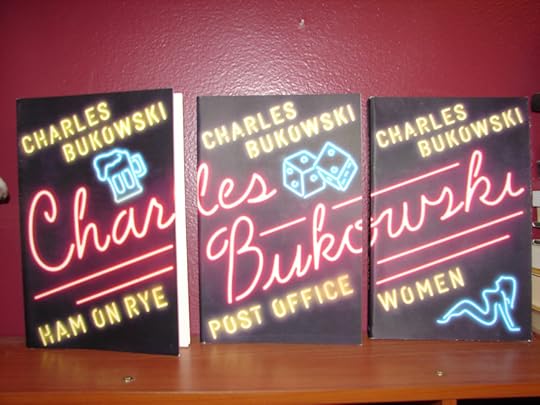 Over the last several months, I have noticed on my Facebook feed, friends have been posting memes featuring quotes from a writer named Charles Bukowski.�� I found myself in alignment some of them, such as:
Over the last several months, I have noticed on my Facebook feed, friends have been posting memes featuring quotes from a writer named Charles Bukowski.�� I found myself in alignment some of them, such as:
Well, maybe not necessarily the drinking one.�� :)
Still, it intrigued me to look into this writer.�� And as fate would have it, my ritual of visiting New Horizons Book Store in Roseville on Thursdays before bowling revealed to me the three novels reissued by HarperCollins imprint, Ecco; Ham on Rye, Post Office, and Women.
According to the books’ About the Author page, Charles Bukowski was born in Andernach, Germany to an American soldier father and German mother in 1920, and brought to the United States at the age of three.�� The three novels feature Henry Chinaski, Bukowski’s alter ego, which fictionalizes periods of his life.
I thought I was being clever, reading them in the order that they were published – Post Office (1971), Women (1978), and Ham on Rye (1982).�� However, to follow through his life chronologically, the way they are photographed above would be the proper order.
Ham on Rye covers the youth of Henry Chinaski.�� It could not be said that Chinaski had the ideal childhood, growing up as the country was moving out of the Depression.�� It’s raw, it’s gritty, and it’s real.�� Chinaski makes no bones about his condition.
Gathered around me were the weak instead of the strong, the ugly instead of the beautiful, the losers instead of the winners. It looked like it was my destiny to travel in their company through life. That didn���t bother me so much as the fact that I seemed irresistible to these dull idiot fellows. I was like a turd that drew flies instead of like a flower that butterflies and bees desired. (Pg. 155)
Graduating from high school, he found a job working for a department store, which was short-lived, then decided to go to college to get a degree in journalism.�� Kicked out of his home by his father, after having read the short stories Henry had written and hidden in his room, he moved on, renting a room in the Bunker Hill section of LA.�� The first night there, he pondered his future.
Maybe I could live by my wits.�� The eight-hour day was impossible, yet almost everybody submitted to it.�� And the war, everybody was talking about the war in Europe.�� I wasn’t interested in world history, only my own.�� What crap.�� Your parents controlled your growing-up period, they pissed all over you.�� Then when you got ready to go out on your own, the others wanted to stick you into a uniform so you could get your ass shot off.
The wine tasted great.�� I had another.
The war.�� Here I was a virgin.�� Could you imagine getting your ass blown off for the sake of history before you even knew what a woman was?�� Or owned an automobile?�� What would I be protecting?�� Somebody else.�� Somebody else who didn’t give a shit about me.�� Dying in a war never stopped wars from happening.�� (Pg. 265)
I read this book after the other two, because of its pub date.�� I wonder if I had read it first if I would have been interested in continuing with the other two.�� Harry Chinaski is not likeable, but sympathetic.�� Only glimpses of compassion seep through the anger and resentment that fuels Chinaski’s anti-social behavior.�� Still, it was a compelling read.�� I purchased all three of these books in early February, and finished them by the end of March.�� I tend not to get through 770 pages in that quick a timespan.
Spoiler alert:�� This is the conclusion of Post Office.
“In the morning it was morning and I was still alive.�� Maybe I’ll write a novel, I thought.�� And then I did.”
Post Office is about a period of his (Henry Chinaski/Charles Bukowski) life when he worked for the post office, first as a letter carrier, then as a clerk. It���s about three different relationships as well, the first with a woman he referred to as his shackjob named Betty. He eventually resigns from the post office and Betty gets a job as a typist. She becomes jealous of him being home, with the whores around the neighborhood making themselves known to him. He had become friendly with two of them, and he ended up leaving her, and the other two women, behind. Next, he meets and marries the daughter of a wealthy family, Joyce, who was thirteen years younger than him. To keep up appearances, she made him get a job, so back to the post office it was, and she got a job with the police department as a clerk. She met a nice gentleman, who she fell in love with, and thus ended the marriage. Betty once again enters his life, which becomes the end of hers as she dies. Enter Fay, a war-protester/writer, who wanted to save the world. He gets Fay pregnant. Fay had the baby, then took the child to a hippie commune in New Mexico.
This was Bukowski’s first novel, published in 1971, and the first I read of the three, because it was the first written, and because my father is a retired letter carrier.�� Detailing Chinaski’s employment with the post office (“It began as a mistake” – the opening line), we are privy to the thoughts of the man as he toils as a letter carrier, gambles at the race track, and ambles through relationships, all the while consuming alcohol as if it were the air he needed to breathe.�� Chinaski wanted freedom, and the post office did not provide that.
After dinner or lunch or whatever it was — with my crazy 12-hour night I was no longer sure what was what — I said, “Look, baby, I’m sorry, but don’t you realize that this job is driving me crazy? Look, let’s give it up. Let’s just lay around and make love and take walks and talk a little. Let’s go to the zoo. Let’s look at animals. Let’s drive down and look at the ocean. It’s only 45 minutes. Let’s play games in the arcades. Let’s go to the races, the Art Museum, the boxing matches. Let’s have friends. Let’s laugh. This kind of life like everybody else’s kind of life: it’s killing us. (Page 74).
His relationship with women is anything but politically correct – this during the period of the early 1950’s to his departure from the post office in 1969.
God or somebody keeps creating women and tossing them out on the streets, and this one���s ass is too big and that one���s tits are too small, and this one is mad and that one is crazy and that one is a religionist and that one reads tea leaves and this one can���t control her farts, and that one has this big nose, and that one has boney legs ��� But now and then, a woman walks up, full blossom, a woman just bursting out of her dress ��� a sex creature, a curse, the end of it all. (Page 138)
But there are signs that Chinaski feels and aches, such as when Betty returned to his life after his divorce with Joyce.
It was sad, it was sad, it was sad. When Betty came back we didn’t sing or laugh, or even argue. We sat drinking in the dark, smoking cigarettes, and when we went to sleep, I didn’t put my feet on her body or she on mine like we used to. We slept without touching.
We had both been robbed. (Page 96).
Women, published in 1978, picks up with his relationships with women after achieving writing success. There were several; Lydia who weaved in and out of the story, coming back to him, then leaving him because he shacked up with another; and so many others that it would take some time to go through. The final section occurs when he meets three women at once;
Sara was 32, a classy wench, good style and a heart���Debra was Jewish with large brown eyes and a generous mouth, heavily smeared with blood-red lipstick���I guessed she was somewhere between 30 and 35���Cassie was tall with long blond hair, very young, expensively dressed, modish, hip, ���in,��� nervous, beautiful. (Page 201).
He starts with Cassie, then days later, Debra, then Sara after that (and had sex with Debra���s assistant, Tessie, in Debra���s apartment in between). Sampling each, if you will. But Cassie ended first because he called her and a man answered the phone. And Sara was committed to Drayer Baba – a spiritual guru – and a healthy living style, which included marriage before sex. So he partnered with Debra until she had enough of his philandering, then continued seeing Sara. There definitely seemed to be something to his attraction to Sara, though he challenged it by having sex with another fan or two. In the end, there is a sense that he is willing to make a commitment to Sara as a nineteen-year-old fan wants to get with him, and he declines.
But it’s not only the relationships that made this novel interesting to me, but also his life as a writer and thoughts about writing.�� For example, inspiration:
There was something to be learned about writing from watching boxing matches or going to the racetrack. The message wasn���t clear but it helped me. That was the important part: the message wasn���t clear. It was wordless, like a house burning, or an earthquake or a flood, or a woman getting out of a car, showing her legs. I didn���t know what other writers needed; I didn���t care, I couldn���t read them anyway. (Pg. 101)
And discipline:
I���ve got to get back to the typewriter, I thought. Art takes discipline. Any asshole can chase a skirt. (Pg. 107)
And writers in general:
There is a problem with writers. If what a writer wrote was published and sold many, many copies, the writer thought he was great. If what a writer wrote was published and sold a medium number of copies, the writer thought he was great. If what a writer wrote was published and sold very few copies, the writer thought he was great. If what the writer wrote never was published and he didn���t have the money to publish it himself, then he thought he was truly great. The truth, however, was that there was very little greatness. It was almost nonexistent, invisible. But you could be sure that the worst writers had the most confidence, the least self-doubt. Anyway, writers were to be avoided, and I tried to avoid them, but it was almost impossible. They hope for some sort of brotherhood, some kind of togetherness. None of it had anything to do with writing, none of it helped at the typewriter. (Pg. 140)
And the low self-confidence we writers tend to feel about our work:
������Buy me a drink,��� I asked her.
She nodded to the barkeep. He came over.
���Vodka-7 for the gentleman.���
���Thanks������
���Babette.���
���Thanks, Babette. My name���s Henry Chinaski, alcoholic writer.���
���Never heard of you.���
���Likewise.���
���I run a shop near the beach. Trinkets and crap, mostly crap.���
���We���re even. I write a lot of crap.’��� (Pg. 181)
There is one statement that touched me.�� After reading it, it hit something at my core and the reason I write fiction.�� Chinaski was asked “What is fiction?” His response?�� “Fiction is an improvement on life.”�� (Pg. 197)
A book can be read and enjoyed.�� A really good book can make one want to read more books by and about the author.�� Maybe because I’m a writer who still feels like he’s finding his voice and honing his craft (which probably 99% of all writers feel), I found these novels to be interesting because of the writing.�� The language is coarse, and perhaps even offensive to some.�� I almost feel guilty being drawn to it and reading it.�� But the narrator feels real because he is being honest about himself with us.�� It makes the characters real.�� As he states in this interview, reading Ham on Rye, Post Office, and Women his writing is very much bim-bim-bim, bim-bim-bim.
In finding the interview, I also found this video which reads Bukowski’s poem, So You Want To Be a Writer?.
In the Paris Review #212, Hilary Mantel was interviewed and said,
Among writers themselves, the question is not who influences you, but which people give you courage. When I began, the female writer who gave me courage, among our contemporaries, was Beryl Bainbridge.�� I don’t write like Beryl, and never have, but when I began to read her, her books were so off the wall, they were so screamingly funny in a black way, and so oblique, that I thought, If she can get away with this, so can I.�� (Page 62)
This is why I will be reading more Bukowski. Back in November, while in Traverse City, I found a few of his books at Landmark Books, and decided upon Notes of a Dirty Old Man. It was blurbed to be a collection of his columns from the underground paper, OPEN CITY, and I have a bookmark about sixty pages in.�� I recently found��Hollywood at Book Beat.
Charles Bukowski died on March 9, 1964.�� On his gravestone are the two words he lived by.�� Don’t Try.


April 4, 2015
(Comic) Book Review: The Question
 In 1987, DC Comics revamped the old Charlton Comics character, The Question.�� Veteran writer Dennis O’Neil undertook the project and created one of the most interesting comic book characters I ever read.
In 1987, DC Comics revamped the old Charlton Comics character, The Question.�� Veteran writer Dennis O’Neil undertook the project and created one of the most interesting comic book characters I ever read.
The Question was not bestowed with super powers.�� He was Victor Sage – news anchor and journalist on Hub City’s KBEL Television station who pulled no punches.�� Hub City was a cesspool of crime and vice, on the streets and in the professions that are supposed to be upstanding.�� In order to get the lead on stories and contribute to rounding up Hub City’s vermin, Sage donned a flesh-toned plastic mask that affixed to his face by way of a gas concocted by his friend and philosophical sparring friend, Aristotle Rodor, Ph.D., or “Tot” for short.�� The mask created the image of a faceless man.
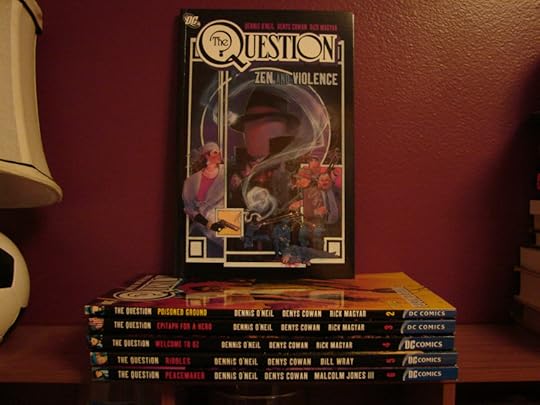 The Question was not driven by revenge, like Batman, or by some accidental or in-born ability motivating him out of a sense of responsibility to use his power for the benefit of mankind.�� The Question was driven by his desire to discover and learn about life.
The Question was not driven by revenge, like Batman, or by some accidental or in-born ability motivating him out of a sense of responsibility to use his power for the benefit of mankind.�� The Question was driven by his desire to discover and learn about life.
At the conclusion of the first issue, The Question was severely beaten by Lady Shiva, a martial artist beyond compare, along with some of the Mayor’s thugs.�� Sage’s body was dumped in the river, the group assuming his demise.�� Lady Shiva, however, retrieved him from the river and returned him to Tot’s home.�� Sage’s body broken, she left behind a series of maps, which led Sage to Lady Shiva’s teacher, Richard Dragon.�� The paraplegic Dragon trained Sage in the way of the warrior.�� Upon the completion of his training, Sage is sent home with Dragon’s final observation.
“I think Shiva is wrong.�� She says you have a passion for combat…that’s why she asked me to help you.�� I disagree.�� I think your passion is curiosity.”
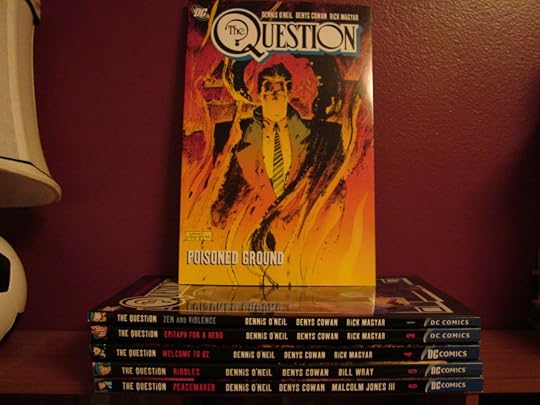 Sage continued on in Hub City, questioning and combating crime.�� Often he would “go within” in meditation to calm or center himself on what he was about to embark on.
Sage continued on in Hub City, questioning and combating crime.�� Often he would “go within” in meditation to calm or center himself on what he was about to embark on.
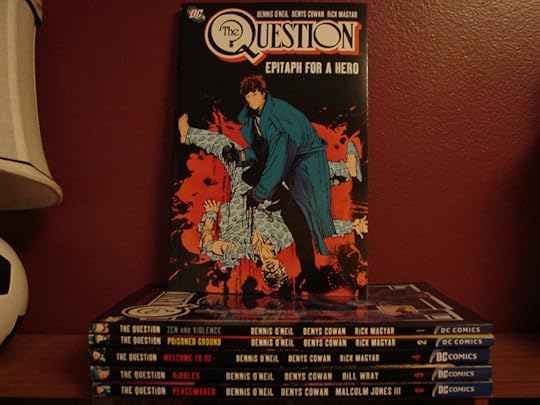 At the conclusion of the Letters Page (appropriately titled The Answer), O’Neil would include “recommended reading.”�� As noted in the first issue’s letter page, it wasn’t like school where the reading was required.�� Rather, the reading was recommended because it was source material upon which The Question was inspired.�� Below is a list of some of the reading recommended in the first twenty issues of the comic.
At the conclusion of the Letters Page (appropriately titled The Answer), O’Neil would include “recommended reading.”�� As noted in the first issue’s letter page, it wasn’t like school where the reading was required.�� Rather, the reading was recommended because it was source material upon which The Question was inspired.�� Below is a list of some of the reading recommended in the first twenty issues of the comic.
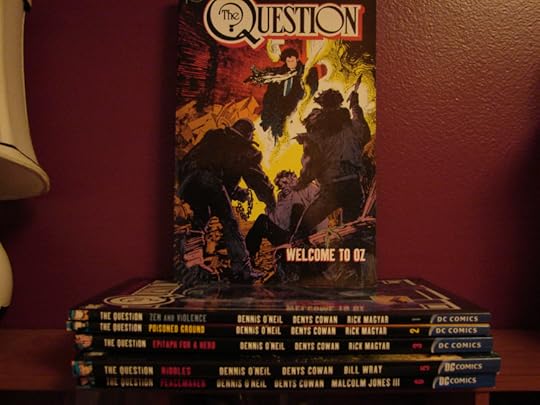 Zen and the Art of Motorcycle Maintenance by Robert Pirsig.
Zen and the Art of Motorcycle Maintenance by Robert Pirsig.
Movements of Magic: The Spirit of Tai Chi Chuan by Bob Klein
Golf in the Kingdom by Michael Murphy
Way of the Peaceful Warrior by Dan Millman
Any of the Eighty-Seventh Precinct novels by Ed McBain
The Uses of Enchantment by Bruno Bettelheim
Steppenwolf by Herman Hesse
Crime and Punishment by Dostoevsky
The Wandering Taoist and Seven Bamboo Tablets of the Cloudy Satchel by Den Ming Dao
Tai Chi: The Supreme Ultimate by Lawrence Galante
The Tao of Physics by Fritjof Capra
Zen and the Art of Martial Arts by Joe Hyams
Through a Scanner Darkly by Philip K. Dick
Chop Wood, Carry Water: A Guide to Finding Spiritual Fulfillment in Everyday Life by Rick Fields
The Invisible Man by Ralph Ellison
Zen Without Zen Masters by Camden Barnes
The Art of War by Sun Tzu
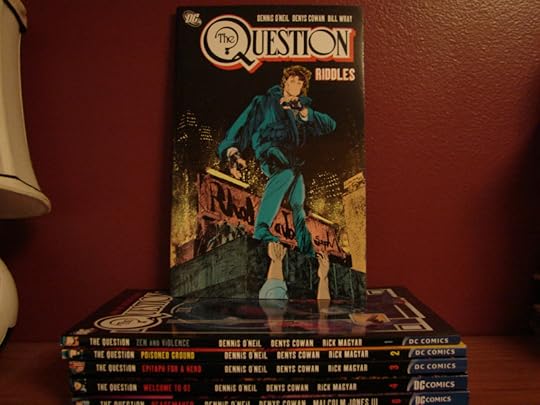 One of my favorite stories was a three-part tale titled Fables.�� The story began in Detective Comics Annual #1, continued in Green Arrow Annual #1, and concluded in The Question Annual #1.�� It involved a sensei who was over 150 years old and ready to move onto the next world, but sought the aid of Batman, Green Arrow, and The Question (along with Lady Shiva) to take him to his resting place.�� He uses fables to win the assistance of Batman and Green Arrow, but had no fable for The Question.�� Sage had to learn his in the end.
One of my favorite stories was a three-part tale titled Fables.�� The story began in Detective Comics Annual #1, continued in Green Arrow Annual #1, and concluded in The Question Annual #1.�� It involved a sensei who was over 150 years old and ready to move onto the next world, but sought the aid of Batman, Green Arrow, and The Question (along with Lady Shiva) to take him to his resting place.�� He uses fables to win the assistance of Batman and Green Arrow, but had no fable for The Question.�� Sage had to learn his in the end.
The series was cancelled after thirty-six issues.�� The Question made a few cameo appearances and had�� a brief run as a quarterly comic.�� I was disappointed to learn that DC killed Victor Sage and replaced him with Renee Montoya of the Gotham City Police Department.�� Nothing involving the character since can compare to the brilliant storytelling of Dennis O’Neil and the gritty artwork of Denys Cowan.
The six-volume trade paperback series includes the entire run (minus the Fables story), which I return to often.

March 29, 2015
Vinyl memories #5 – Sha Na Na
It’s the 1970’s.�� In the sheltered world of suburbia – Plymouth to be precise – I was growing up.�� Bicycle riding in the neighborhood, trading baseball cards with kids at school, and cutting the lawns of my grandparents and the homes of two other senior citizens on our block.�� Television was limited to two dials, with our CBS-affiliate (Channel 2), NBC-affiliate (Channel 4), and ABC-affiliate (Channel 7) on the VHF dial with a CBC-affiliate, Channel 9 out of Windsor.�� On the UHF dial were channels 20 (WXON), 50 (WKBD), 56 (PBS), and 62 (WGPR).�� Compared to today, a much simpler time for a kid growing up.
After discovering The Monkees (see Vinyl memories #4), there was nothing else that drew me musically.�� I listened to 800 AM, CKLW, which played popular music.�� On the FM dial, friends were listening to WRIF, Detroit’s legendary rock station.�� But I found the music to be too dark and scary for me.
In 1974, the television show Happy Days hit the air.�� This introduced to me the 1950’s era of music.�� I discovered 580 on the AM dial, WHND, Honey radio, which played the hits of the 50’s and 60’s.�� It was the station I locked in on in the first car I got to drive after getting my license – a 1964 Mercury Comet with a red body and white roof, despite the razzing and challenging of friends who knew the power behind the Comet’s V-8.�� Four or five guys I knew would take their cars late at night onto M-14 as it was being constructed, and raced.�� They wanted to test their Mustangs and other vehicles against my Comet.�� But yeah, I was a nerd, and the fear of getting caught outweighed the street cred I may have earned by taking up their challenge.�� Richie Cunningham I was not.
One day in the record store – most likely Harmony House – I found them.�� Sha Na Na.�� The modern day 50’s band.
The band emerged in the late 1960’s, and was actually the spark that revived the music of the 1950’s when they appeared at Woodstock, preceding Jimi Hendrix.�� According to the June 16, 1972 issue of��Life Magazine, in an article about “The Nifty Fifties,” it was Sha Na Na that kicked off the craze, bringing forth the television show Happy Days, and the musical, Grease.
Sha Na Na covered classic 50’s hits like “Get a Job,” “Earth Angel,” “Why Do Fools Fall In Love,” and “Good Night Sweetheart.”�� The charismatic bass, Jon “Bowzer” Bauman, tended to be the face and leader of the group.�� My favorite had to be Johnny Contardo.�� He could sing all the sweet, heart-felt ballads like “Tell Laura I Love Her” and “Chances Are.”�� But you’d never catch me in one of those gold jackets exposing my chest, and gold tights.
It was somewhere between my junior and senior year in high school when fellow trumpet player, Mark Zamarka, asked if I was interested in joining him and his parents to a Sha Na Na concert at Pine Knob.�� Everyone else I knew in school was going to concerts of the rock bands of the times – The Stones, Van Halen, Eagles, Kansas, Foreigner, etc. – but my first concert was Sha Na Na.�� Grease for Peace, baby!�� Then, later when dating my wife, Sha Na Na returned to Pine Knob, and I took her to see them�� (and to think, she still married me!).
It seemed only natural that Sha Na Na would find themselves with a variety television show in the late 70’s.�� The show would feature a classic 50’s artist.�� I found this YouTube clip of a show, bringing back fond memories of the group.
Sha Na Na is still around today, with some of the members from the band I remember still in the group.
Spinning these records today sh-booms me back to a simpler time.�� Sha Na Na From the Streets of New York is a live concert recorded August 28, 1973 in Central Park.�� The mix of tunes on Hot Sox varied from the classic covers of these songs.�� And the rest, well, if it’s spinning on my record player then I’m likely singing along as I did back in the 1970’s, listening to the 1950’s radio station in my 1960’s car.
Sha Na Na: From the Streets of New York
Side One
High School Confidential
The Wanderer
Splish Splash
Ring Around Your Neck
Get a Job
Sh-Boom
Side Two
Tossin’ and Turnin’
Earth Angel
Summertime Summertime
Come Go With Me
Chances Are
Goodnight Sweetheart
Sha Na Na: Hot Sox
Side One
Maybe I’m Old-Fashioned
Romeo and Juliet
Hot Sox
Easier Said Than Done
Stroll All Night
Sh-Boom (Life Could Be A Dream)
Side Two
You Talk Too Much
Bad Boy
Too Chubby To Boogie
Don’t You Just Know It
Dreams Come True


